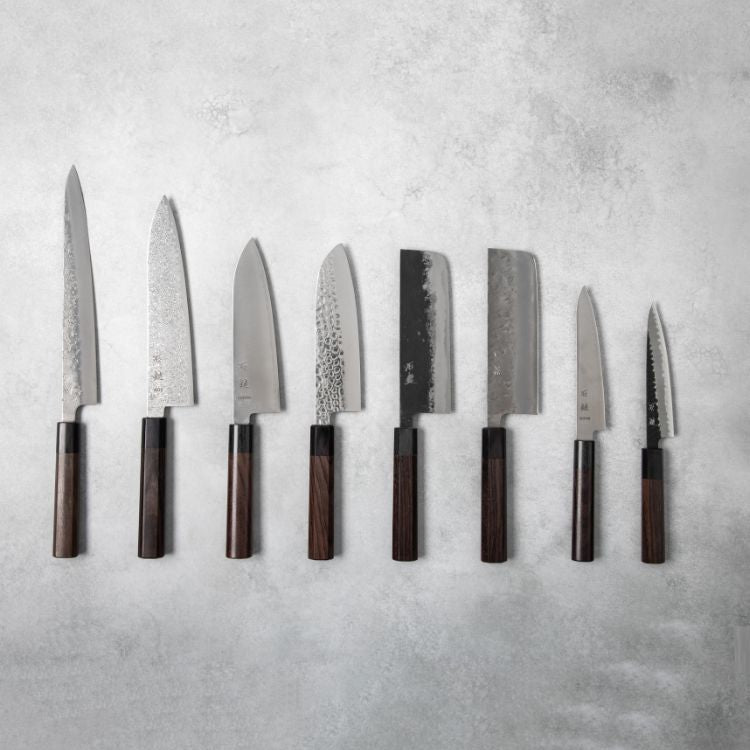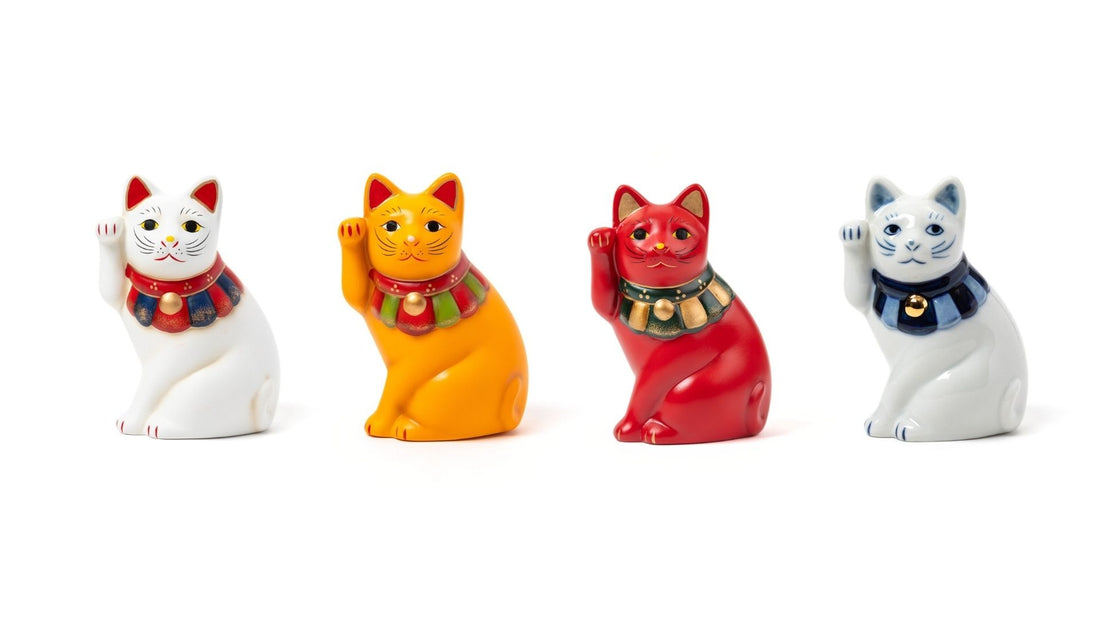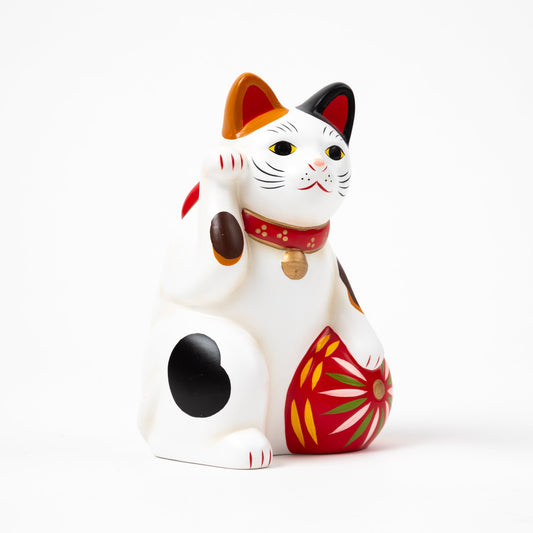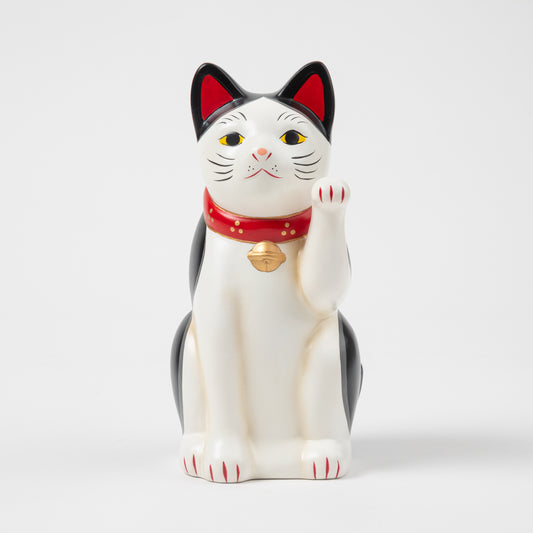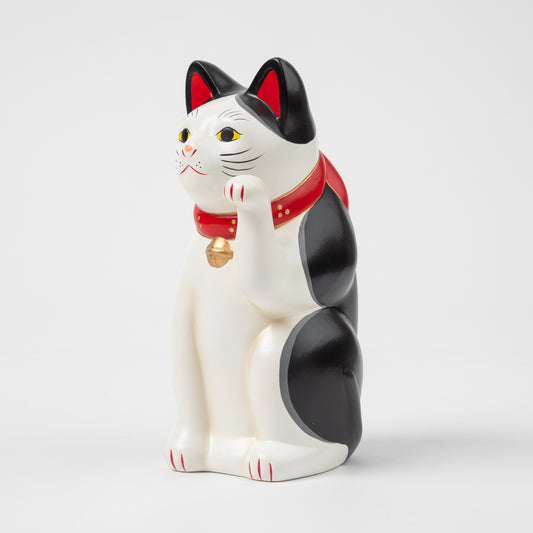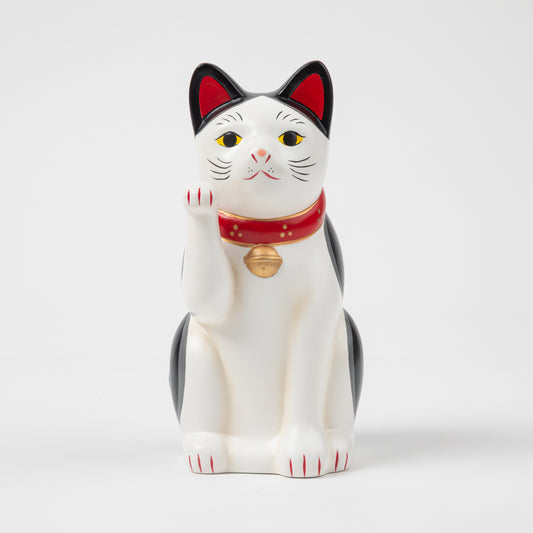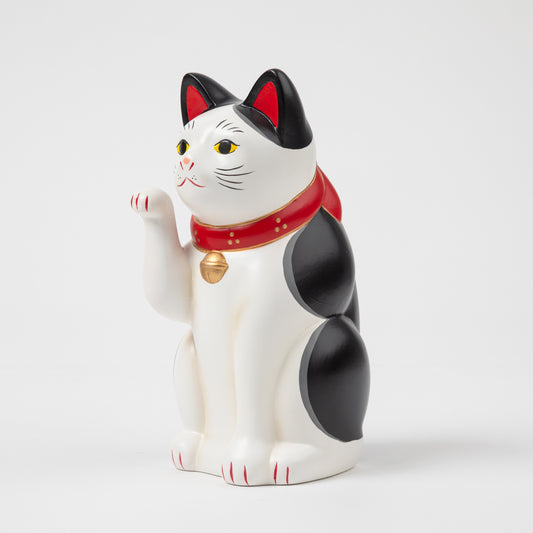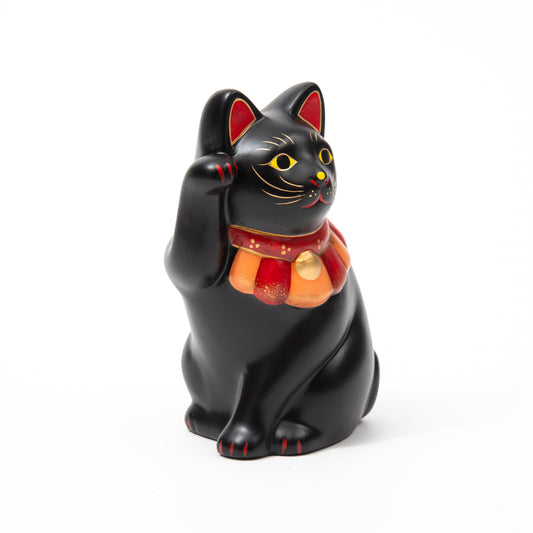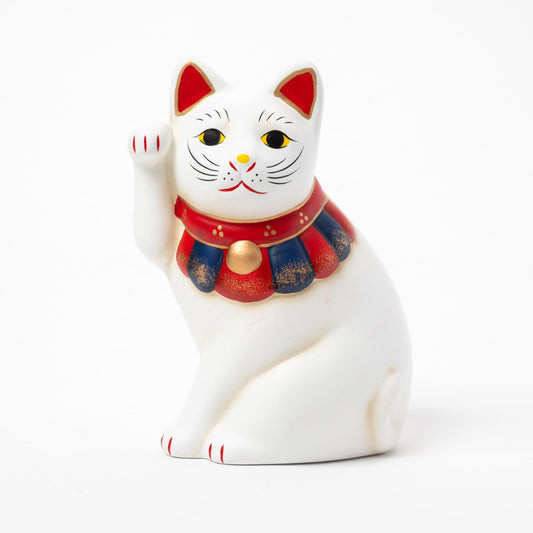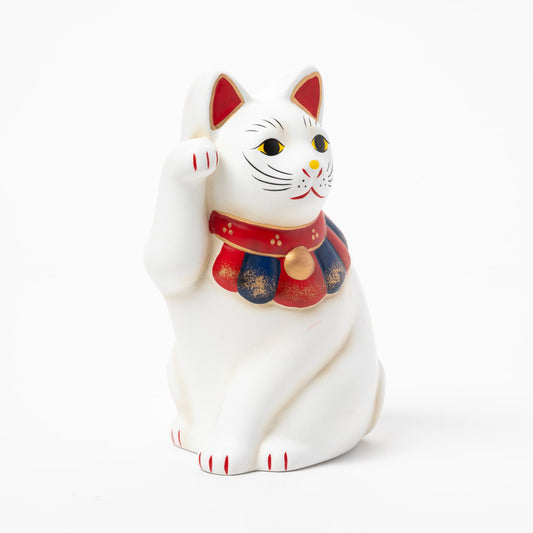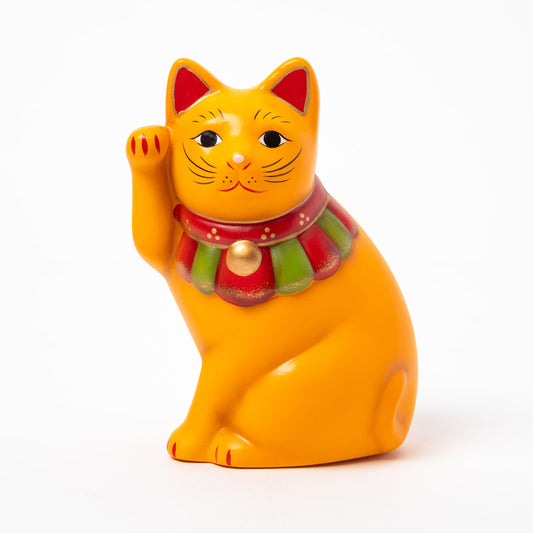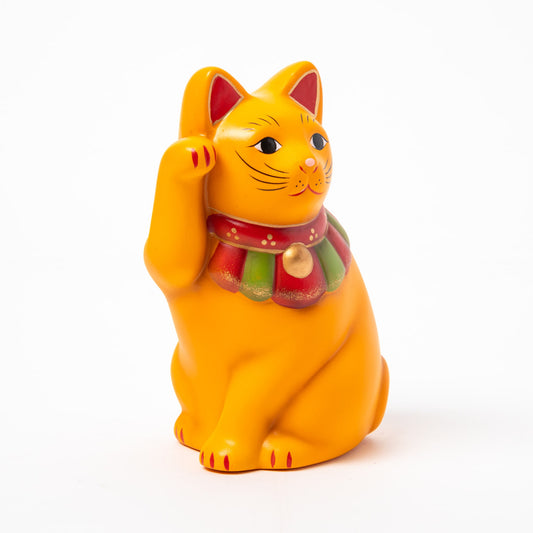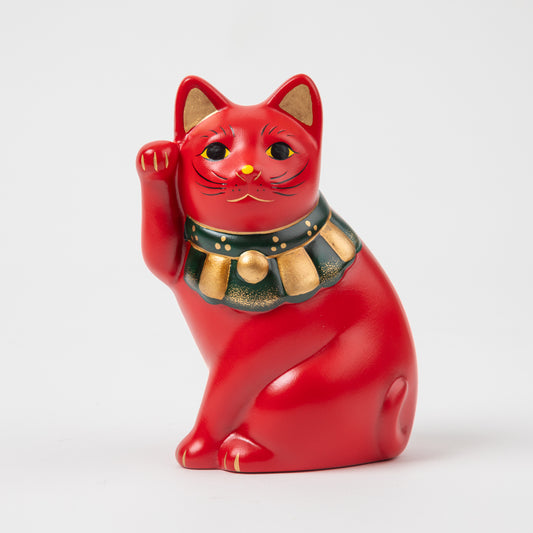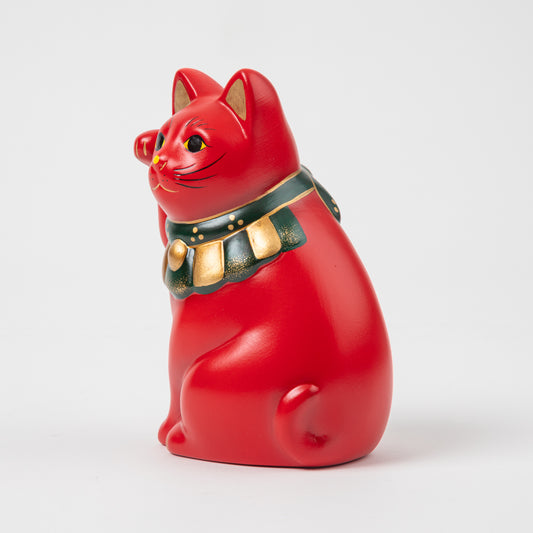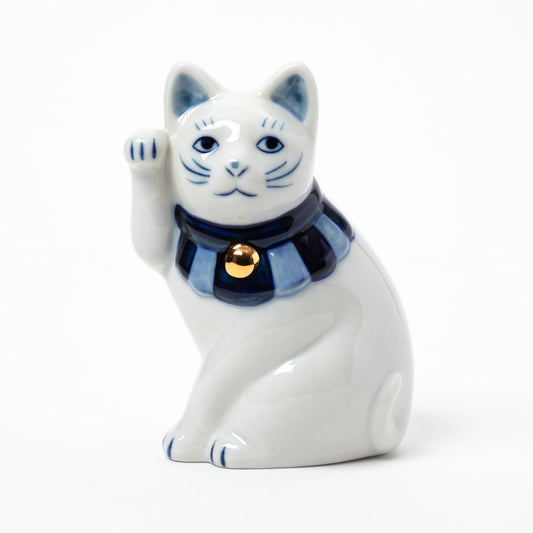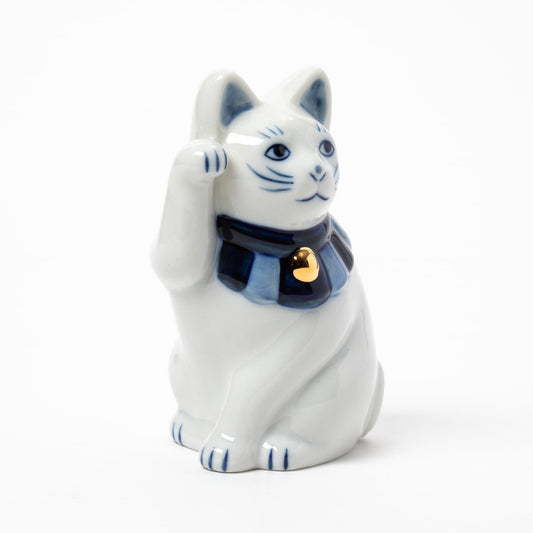Cats have long held a revered position in East Asian folklore, symbolizing prosperity and good fortune. If you've ever visited a Chinese restaurant, shop globally, or are a fan of Japanese culture, you might have encountered statues of beckoning cats – a ubiquitous symbol of good luck. This very same feline figure, known in Japan as the Maneki Neko, has captivated hearts and imaginations for centuries.
But what is the story behind this iconic lucky cat? What cultural significance does it hold in Japan? Today let us show you the captivating world of the Maneki Neko, exploring its origins and the charming lore that continues to endear it to this day.
Contents
- What are Maneki Neko?
- The Origin of the Lucky Cat
- The Different Meanings of Colors and Decorative Items
- Maneki Neko Tips and Facts
- Where to See Maneki Neko in Japan
- Omakase Recommended Maneki Neko
- In Conclusion
What are Maneki Neko?

Translated as "beckoning cat" (Maneki – beckoning, neko – cat), the Maneki Neko's key feature lies in its raised paw. This gesture, believed to invite good fortune, can be raised on either the left or right side, each signifying a different kind of luck. Traditionally, the left paw beckons customers and wealth, while the right paw signifies good luck and general fortune.

There is also a rarer version where the cat is raising both hands in a "banzai", a pose can bring in money and people, there is also a superstition that associates this gesture with bad luck. This is because the word "banzai" can be interpreted as bankruptcy or surrender. As such, it’s important to be mindful before opting for this particular gesture. It should also be noted that the higher the hands are raised, the more potent or farther the luck being summoned is believed to be.
The Maneki Neko's origins are steeped in folklore. Originally revered as protectors of agricultural produce and silkworms from pesky rodents, these feline figures later transitioned into symbols of prosperity for the booming silk industry. As times evolved, and the silk trade diminished, the Maneki Neko's appeal shifted towards attracting good fortune for all businesses.
The Origin of the Lucky Cat
The Maneki Neko, Japan's iconic lucky cat, boasts a rich cultural history shrouded in the mists of time. One of the most widely known tales takes us back to the vibrant Edo Period (1603-1868).

This captivating tale unfolds within the serene grounds of a temple garden. A lone traveler, seeking respite, stumbles upon a curious sight – a beckoning cat, its paw raised in an inviting gesture. Intrigued, the man follows the feline, drawn by its silent call. Moments later, a bolt of lightning strikes the very spot he previously occupied. Shaken yet deeply grateful, the man recognizes a debt of life to the cat. He generously donates to the temple, ensuring its continued prosperity for years to come.
This encounter solidified the Maneki Neko's association with good fortune, forever etching its image into the fabric of Japanese culture. Whether factual or embellished, the story underscores the enduring belief in the lucky cat's ability to beckon good luck and prosperity.
The Different Meanings of Colors and Decorative Items

Maneki Neko, the beckoning cats of Japan, transcend their adorable charm. Their vibrant hues hold a deeper meaning, each color symbolizing a specific type of fortune.
- White, the most beloved color, beckons for overall good luck, a universal wish for all.
- Black Maneki Neko, often misunderstood elsewhere, are revered in Japan for warding off evil spirits and promoting peace and prosperity within the home.
- Gold/Yellow Seeking financial blessings? Opt for a gold or yellow Maneki Neko. Their dazzling color symbolizes the wealth and prosperity they beckon.
- Red Maneki Neko are believed to bring the gift of good health and longevity. This association stems from a time when red was seen as a deterrent against the smallpox demon.
- Pink For love's sweet bloom, choose a pink Maneki Neko. Particularly those with the left paw raised, further symbolizing the attraction of love into your life.
Now we’ve covered colors, what about the decorations you may have seen these curious cats carrying? While a gold coin is one of the most frequently spotted, there are other items you might spot them holding.

Similar to the fox statues at Inari shrines, Maneki Neko often adorns symbolic items:
- Bell-adorned collars echo those worn by wealthy Edo-period pets, signifying prosperity.
- Bibs mirror the red bibs worn by Jizo statues, offering protection.
- Golden oval coins, as mentioned one of the most spotted, often labeled '千萬両' (10 million ryo), represent immense wealth.
- Carp fish, symbolizing strength and abundance, signify bountiful harvests and prosperity.
- Balls or gemstones embody wisdom and wealth.
- Empty sake barrels ward off evil spirits and usher in good luck.
- Shakeable hammers, or uchide no kozuchi shower their owner with metaphorical wealth.
- Daikon radishes, a large, auspicious vegetable, beckon good fortune.
- Drums represent businesses overflowing with customers.
Next time you encounter a lucky cat, take a moment to appreciate the story woven into every detail of these cute companion figures.
Maneki Neko Tips and Facts
Where You Should Place Your Maneki Neko?

For optimal good luck, position your Maneki Neko at the home's front entrance, where financial and visitor luck naturally flows in. Its gaze should be directed towards the doorway, actively beckoning good fortune. For a further boost, place it on a shelf higher than eye level. Avoid relegating it to quiet corners or closets, as it thrives in areas with high foot traffic.
Caring for Your Lucky Cat

Maneki Neko's care depends on the material. Generally, gentle dust removal with a soft cloth suffices. For ceramic Maneki Neko, this ensures a clear shine. Exercise caution with wood or fabric ones; avoid moisture to prevent mold growth. And feel free to give them an affectionate pet now and then – just like a real feline friend!
Celebrating the Lucky Cat
Japan dedicates September 29th as Maneki Neko Day, a day to honor these charming felines. The date itself is a clever wordplay – "9" (ku) and "2" (fu) can be read as "kuru fuku," meaning "come, good fortune." Throughout the country, various Maneki Neko-themed events take place on this day.
Saying Goodbye to Your Maneki Neko
When the time comes to part ways with your Maneki Neko, there are respectful ways to do so. Ideally, take it to a Japanese shrine or temple for a ceremonial disposal. Lucky items like Maneki Neko are believed to attract energy, and shrines offer proper disposal methods.
Alternatively, you can dispose of it with your regular trash. However, place it in a bag with coarse salt (known for purification in Japan). Disposing of it with gratitude ensures that new good fortune finds its way to you. Remember, never discard it carelessly, as this is considered unlucky.
By following these guidelines, you can ensure your Maneki Neko beckons good fortune and prosperity for years to come.
Where to See Maneki Neko in Japan
Tokyo boasts two captivating sites deeply entwined with the history of Maneki Neko. Be sure to stop by if you find yourself traveling in the neighborhood:

Imado Shrine (Asakusa): Nestled in the heart of Asakusa, this shrine is believed to be the birthplace of Maneki Neko. Legend tells of a kind woman who, in a time of hardship, dreamed of her beloved cat beckoning her toward fortune. Inspired, she crafted a ceramic feline figurine, and the Imado Ware Maneki Neko was born. Today, the shrine is a popular spot for matchmaking blessings, with a pair of prominent male and female Maneki Neko statues.

Gotokuji Temple (Setagaya): Located southwest of Shibuya, Gotokuji Temple is a haven for Maneki Neko devotees. Here, visitors can purchase and make wishes upon Maneki Neko figurines of all sizes. Traditionally, these figurines are offered to the temple and placed within a dedicated area overflowing with hundreds of beckoning cats. Alternatively, some choose to take their Maneki Neko home, returning it upon their wish's fulfillment.
A visit to either of these locations offers a glimpse into the rich cultural heritage of the Maneki Neko, and perhaps a chance to beckon some good fortune of your own.
Omakase Recommended Maneki Neko
Now you’ve learned more about these charming lucky cats, allow us to recommend some of our picks from our store.
Seto Yokosuwari Maneki Neko
The Seto Yokosuwari Maneki Nekos are meant to attract good luck into your life. Created by the skilled artisans at Chugai Toen, this Maneki Neko features a distinct design element - their slender, slightly hunched posture that mirrors a real cat. Plus, the stunning variety of colors from these luckys cat is sure to bring weath, health, and prosperity to your life.
Further enriching its historical significance, the side-sitting posture echoes depictions seen in Utagawa Hiroshige's ukiyo-e prints, a fascinating link to the Edo period when most beckoning cats were displayed horizontally.
Seto Lucky Ball Holding Maneki Neko
With a mix of tradition and playfulness, this Seto Lucky Ball Holding Maneki Neko embodies all the wisdom. The ball itself represents wealth and abundance, amplifying the beckoning power of the raised paw. Often depicted as crystal or a globe, it signifies the vastness of potential fortune awaiting its owner. This Maneki Neko, with its determined gaze and vivid orb, is a powerful reminder that good luck and prosperity go hand-in-hand.
Seto Speckled Left/Right-Handed Maneki Neko
For those seeking a unique symbol of harmony and balanced fortune, the Seto Speckled Left and Right-Handed Maneki Neko pair beckons with a special charm. Their speckled fur, reminiscent of the lucky number eight in Japanese culture (hachi), is a visual representation of multiplied good luck.
One Maneki Neko raises its left paw, signifying the invitation of customers and good business fortune, while the other raises its right paw, symbolizing general good luck and happiness. Together, this pair embodies the idea of holistic prosperity, attracting both personal and professional blessings..
In Conclusion
Today, the Maneki Neko's popularity extends beyond its commercial significance. Its undeniable cuteness has earned it a place in homes as a cherished decoration, often gifted for momentous occasions like new building construction or business openings.
Whether displayed for its symbolic meaning or just for its adorable charm, the Maneki Neko continues to beckon good fortune and capture hearts across Japan and the world.
